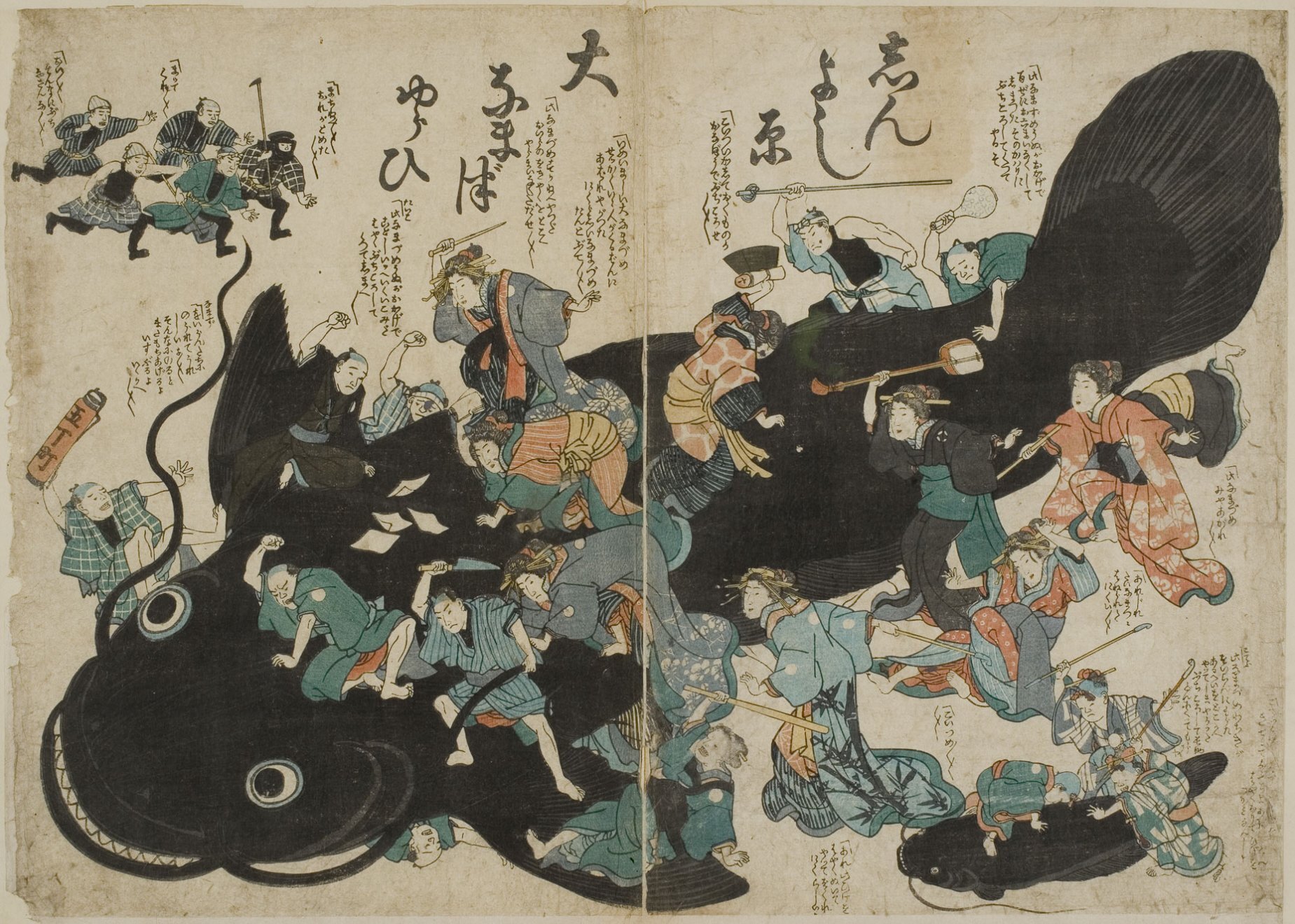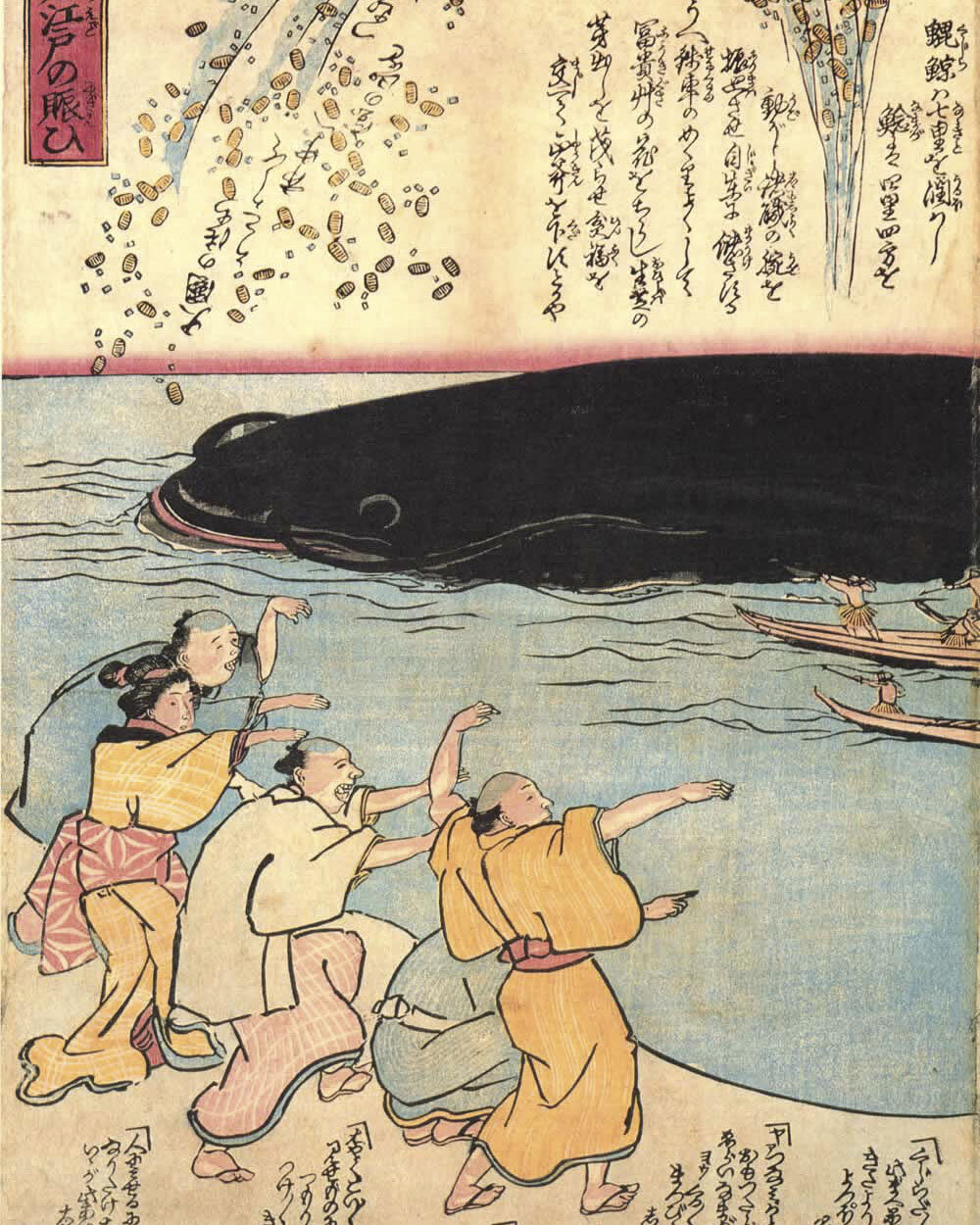NAMAZU - THE ANCIENT HISTORY BEHIND THE EARTHQUAKE CAUSING CATFISH

Primarily residing in freshwater environments or on popular dating apps, the vast majority of catfish are considered to be harmless. On the other hand, in ancient Japanese mythology, catfish were the complete opposite of harmless.
After the Great Ansei earthquake of 1855, which struck Edo (today Tokyo) with a magnitude of 7.0 and claimed about 7000 casualties, the belief that giant catfish had caused the natural disaster rapidly gained in popularity. Within days of the earthquake, a new type of color woodblock print called namazu-e, or catfish pictures, was sold all over town and promised buyers protection from future earthquakes if the print was attached to their homes ceiling.
But how could these peaceful-looking, moustache-wearing catfish be the culprits of such mass destruction? In Japanese mythology, it was believed that the namazu lived in underground lairs deep below Japan and were kept in check by the god of thunder Kashima with a large rock, the kaname-ishi. The Great Ansei earthquake is said to have occurred after Kashima was out of town and left the god of fishing and commerce Ebisu in charge. Unfortunately, Ebisu fell asleep on the job, leaving the catfish to thrash their fins freely against the underside of the landmass and causing terrible earthquakes.
While catfish became widely feared creatures in the aftermath of the earthquake, certain societal groups, mostly working class people, also came to worship the namazu. As depicted in some satirical prints, working class people that prospered as a result of the earthquake such as builders, roofers, carpenters are shown celebrating together with the catfish in entertainment districts, thereby hinting at the notion of wealth distribution as an unintended side effect of earthquakes.
Today, depictions of the giant catfish are still prevalent allover Japan. Colourfully drawn on signs hanging above main roads, a kawaii version of the namazu is there to signal that these highways will be closed off in the event of a major earthquake. What a beautiful way to keep this obscure piece of Japanese mythology well and alive, and a friendly reminder of the potentially devastating consequences of falling asleep on the job.












![TOKYO TOY STORY - A DEEP DIVE INTO TOY CULTURE [Sabukaru for StockX]](https://images.squarespace-cdn.com/content/v1/57825361440243db4a4b7830/1630581822871-1K77421ASXXVS8GY8K6F/Tokyo+Toy+Culture+Madarake+Otaku+Guide+Manga+Anime+Kawas+Toys+Nakano+Broadway35.jpg)
